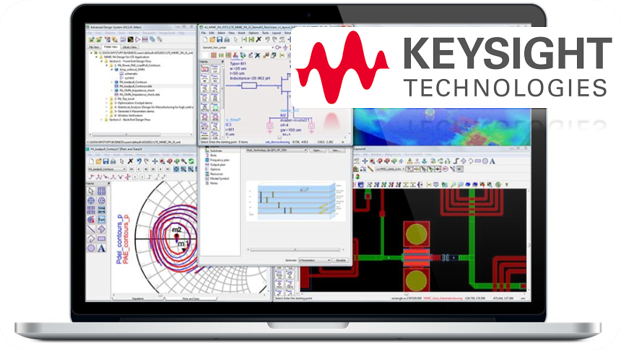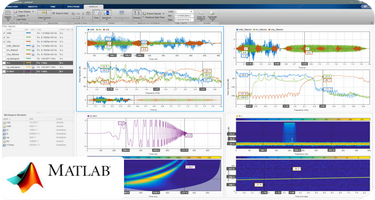A universal modeling approach has been developed by the author which allows to simulate Surface Acoustic Wave (SAW) or Bulk Acoustic Wave (BAW) devices using the Keysight® Pathwave Advanced Design SystemTM (ADS) circuit simulator. It is based on the proprietary ADS-MATLAB interface written in C/C++ which allows to use SAW/BAW MATLAB® models developed by the user or customer for SAW/BAW design in MATLAB. Given MATLAB models of the basic SAW or BAW components (for example, interdigital transducers, reflecting gratings, FBAR, etc.), arbitrary multicomponent SAW/BAW devices composed of these SAW/BAW components are simulated using ADS circuit simulator similar to the conventional RF electronic circuits.
The approach combines MATLAB computational power and modeling flexibility with ADS convenience and handleability for computer-aided design of the RF electronic circuits. This allows to use in practical design much more sophisticated MATLAB SAW/BAW models if compared to the simplified ADS models which are typically represented in terms of the closed-form equations (e.g. canonical form of the Coupling-of-Modes SAW model) or equivalent circuit models composed of the conventional lumped or distributed RF and microwave elements such as R, L, C, transmission line sections, etc. (e.g. FBAR Mason's or mBVD models).
The ADS-MATLAB interface is programmed using mixed language programming in C/C++ and MATLAB. Its implementation is based mostly on the undocumented (or poorly documented) ADS and MATLAB features, with numerous workarounds and know-hows. Backward and forward compatibility with previous, current and future ADS and MATLAB versions is guaranteed by the author, with minimum customer effort with upgrading to the next version.
The approach is based on the ADS concept of the User-Defined Model, or User-Compiled Model (UCM), which is an ADS component model programmed by the user in C/C++ to be used in circuitry simulation like a standard ADS component. Using mixed language programming, the library of the MATLAB SAW/BAW UCMs can be implemented in the form of the ADS Process Design Kit (PDK) which is the most convenient and recommended ADS SAW/BAW design tool to be distributed for designers at the company.
At request, SAW/BAW PDK may contain single- or multi-version UCMs compiled for a particular or multiple ADS versions, respectively. In the latter case, an ADS version is automatically detected and the relevant UCMs library is chosen for ADS simulation. For each new ADS or MATLAB version, SAW/BAW PDK needs to be recompiled with minimum programming effort, if any. This means no user's concern that this modeling approach may fail or get discontinued with time in the future.
Input of the UCM is an arbitrary set of ADS parameters which is convertible to the set of the relevant MATLAB model parameters. In turn, MATLAB UCM returns to ADS the set of Y-parameter values for all constitutive SAW/BAW components. No restrictions on the number of input parameters and/or number of the UCM ports are imposed, in general case.
Prerequisite for running SAW/BAW MATLAB simulation in ADS circuit simulator is installation of the MATLAB Compiler Runtime (MRC) which can be downloaded from the Mathworks Web site and installed on the user's machine.
No MATLAB license is required for MCR installation and usage and hence for running ADS MATLAB UCMs!
In the current form, the implementation and usage of the ADS MATLAB modeling and simulation is limited to the linear analysis of SAW/BAW devices. The next step could be generalization of the approach to the non-linear analysis.
Moreover, using ADS MATLAB UCM is not limited with a specific class of SAW or BAW component models. This is a powerful and versatile RF circuit simulation approach which can be extended to other technical areas.
On the other hand, MATLAB user-defined models can be used not only with ADS, but with other electronic circuit simulators which may include user-compiled models written in C/C++ or Fortran.


